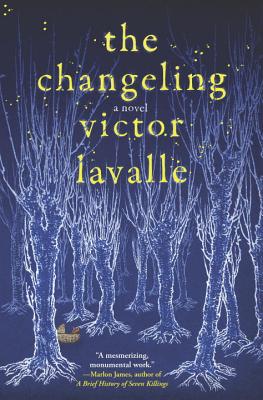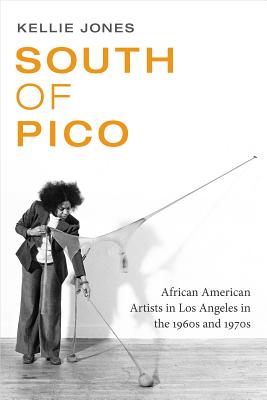American Book Award Winners of African Descent
← Back to Main Awards Page
First presented in 1980, by the Before Columbus Foundation, “the American Book Awards Program respects and honors excellence in American literature without restriction or bias with regard to race, sex, creed, cultural origin, size of press or ad budget, or even genre. There would be no requirements, restrictions, limitations, or second places. There would be no categories. The winners would not selected by any set quota for diversity, because diversity happens naturally. Finally, there would be no losers, only winners. The only criteria would be outstanding contribution to American literature in the opinion of the judges.”
Here we present the American Book Award recipients of African descent.
2 Books Honored in 2018
Fiction
The Changeling: A Novel
List Price: $28.00
Spiegel & Grau (Jun 13, 2017)
Fiction, Hardcover, 448 pages
ISBN: 9780812995947Publisher: Penguin Random House
Book Description:
If the literary gods mixed together Haruki Murakami and Ralph Ellison, the result would be Victor LaValle.Anthony Doerr, author of All the Light We Cannot See
A dark fairy tale of New York, full of magic and loss, myth and mystery, love and madness. The Changeling is a mesmerizing, monumental work.Marlon James, author of A Brief History of Seven Killings
One of Times Top 10 Novels of the Year
When Apollo Kagwas father disappeared, all he left his son were strange recurring dreams and a box of books stamped with the word IMPROBABILIA. Now Apollo is a father himselfand as he and his wife, Emma, are settling into their new lives as parents, exhaustion and anxiety start to take their toll. Apollos old dreams return and Emma begins acting odd. Irritable and disconnected from their new baby boy, at first Emma seems to be exhibiting signs of postpartum depression, but it quickly becomes clear that her troubles go even deeper. Before Apollo can do anything to help, Emma commits a horrific actbeyond any parents comprehensionand vanishes, seemingly into thin air.
Thus begins Apollos odyssey through a world he only thought he understood, to find a wife and child who are nothing like hed imagined. His quest, which begins when he meets a mysterious stranger who claims to have information about Emmas whereabouts, takes him to a forgotten island, a graveyard full of secrets, a forest where immigrant legends still live, and finally back to a place he thought he had lost forever.
This captivating retelling of a classic fairy tale imaginatively exploresparental obsession, spousal love, and the secrets that make strangers out of the people we love the most. Its a thrilling and emotionally devastating journey through the gruesome legacies that threaten to devour us and the homely, messy magic that saves us, if were lucky.
LaValles haunting tale weaves a mesmerizing web around fatherhood, racism, horrific anxieties and even To Kill a Mockingbird.Janet Maslin, The New York Times
Like a woke Brothers Grimm, his clever new spin on the ages-old changeling myth is a modern fairy tale for the Trump era.USA Today (four out of four stars)
Victor LaValles fabulist ode to fatherhood and fairy tales offers a new take on themes as old as time.O: The Oprah Magazine
If the literary gods mixed together Haruki Murakami and Ralph Ellison, the result would be Victor LaValle.Anthony Doerr, author of All the Light We Cannot See
A dark fairy tale of New York, full of magic and loss, myth and mystery, love and madness. The Changeling is a mesmerizing, monumental work.Marlon James, author of A Brief History of Seven Killings
One of Times Top 10 Novels of the Year
When Apollo Kagwas father disappeared, all he left his son were strange recurring dreams and a box of books stamped with the word IMPROBABILIA. Now Apollo is a father himselfand as he and his wife, Emma, are settling into their new lives as parents, exhaustion and anxiety start to take their toll. Apollos old dreams return and Emma begins acting odd. Irritable and disconnected from their new baby boy, at first Emma seems to be exhibiting signs of postpartum depression, but it quickly becomes clear that her troubles go even deeper. Before Apollo can do anything to help, Emma commits a horrific actbeyond any parents comprehensionand vanishes, seemingly into thin air.
Thus begins Apollos odyssey through a world he only thought he understood, to find a wife and child who are nothing like hed imagined. His quest, which begins when he meets a mysterious stranger who claims to have information about Emmas whereabouts, takes him to a forgotten island, a graveyard full of secrets, a forest where immigrant legends still live, and finally back to a place he thought he had lost forever.
This captivating retelling of a classic fairy tale imaginatively exploresparental obsession, spousal love, and the secrets that make strangers out of the people we love the most. Its a thrilling and emotionally devastating journey through the gruesome legacies that threaten to devour us and the homely, messy magic that saves us, if were lucky.
LaValles haunting tale weaves a mesmerizing web around fatherhood, racism, horrific anxieties and even To Kill a Mockingbird.Janet Maslin, The New York Times
Like a woke Brothers Grimm, his clever new spin on the ages-old changeling myth is a modern fairy tale for the Trump era.USA Today (four out of four stars)
Victor LaValles fabulist ode to fatherhood and fairy tales offers a new take on themes as old as time.O: The Oprah Magazine
Nonfiction
South of Pico: African American Artists in Los Angeles in the 1960s and 1970s
by Kellie Jones
List Price: $28.00
Spiegel & Grau (Jun 13, 2017)
Nonfiction, Hardcover, 448 pages
ISBN: 9780822361640Publisher: Penguin Random House
Book Description:
Named a Best Art Book of 2017 by the New York Times and Artforum
In South of Pico Kellie Jones explores how the artists in Los Angeless black communities during the 1960s and 1970s created a vibrant, productive, and engaged activist arts scene in the face of structural racism. Emphasizing the importance of African American migration, as well as L.A.s housing and employment politics, Jones shows how the work of black Angeleno artists such as Betye Saar, Charles White, Noah Purifoy, and Senga Nengudi spoke to the dislocation of migration, L.A.s urban renewal, and restrictions on black mobility. Jones characterizes their works as modern migration narratives that look to the past to consider real and imagined futures. She also attends to these artists relationships with gallery and museum culture and the establishment of black-owned arts spaces. With South of Pico, Jones expands the understanding of the histories of black arts and creativity in Los Angeles and beyond.
Named a Best Art Book of 2017 by the New York Times and Artforum
In South of Pico Kellie Jones explores how the artists in Los Angeless black communities during the 1960s and 1970s created a vibrant, productive, and engaged activist arts scene in the face of structural racism. Emphasizing the importance of African American migration, as well as L.A.s housing and employment politics, Jones shows how the work of black Angeleno artists such as Betye Saar, Charles White, Noah Purifoy, and Senga Nengudi spoke to the dislocation of migration, L.A.s urban renewal, and restrictions on black mobility. Jones characterizes their works as modern migration narratives that look to the past to consider real and imagined futures. She also attends to these artists relationships with gallery and museum culture and the establishment of black-owned arts spaces. With South of Pico, Jones expands the understanding of the histories of black arts and creativity in Los Angeles and beyond.


